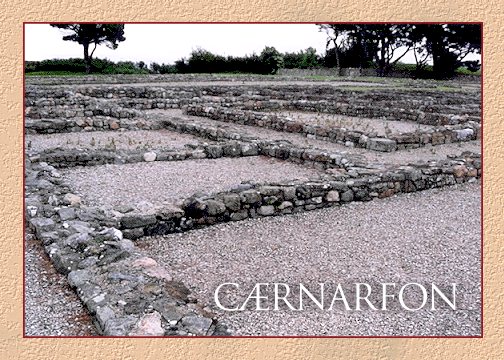
Return to Roman Ruins in Britain

In the autumn of AD 77, having succeeded Frontinus as governor of Britain just a few months before, Julius Agricola completed the Roman conquest of Wales by defeating the Ordovices in the north and then capturing the island of Mona (Anglesey). The fort of Segontium dates from that year. Designed to accommodate a regiment of auxiliary soldiers supported by the legionary bases at Chester and Caerleon, it was garrisoned until almost the end of the fourth century AD, when Magnus Maximus withdrew troops from Britain in an attempt to become emperor. The exceptionally long occupation is explained by the strategic importance of the fort in controlling the fertile land of Mona and defending the Welsh coast against Irish raiders.
Segontium represents a type of Roman ruin often found in Britain. Described in the Michelin Guide as "one of the most famous in Britain," it has a small museum and a guidebook. The military and administrative center of northwest Wales, Segontium is not spectacular. Much of its stone was robbed to construct Caernarfon Castle and only the foundations of the fourth-century barrack blocks remain. Like many ruins, its significance to the visitor lies in the past and not the present.